Boxer’s Fracture
Boxers Fracture
A boxer fracture is a type of broken bone that is most often sustained during a fall. In this blog post, we will explore what happens during surgery to fix a boxer’s hand and how long it typically takes to recover. We will also discuss some of the risks and complications associated with this type of surgery. Stay tuned for more information on boxer fractures.
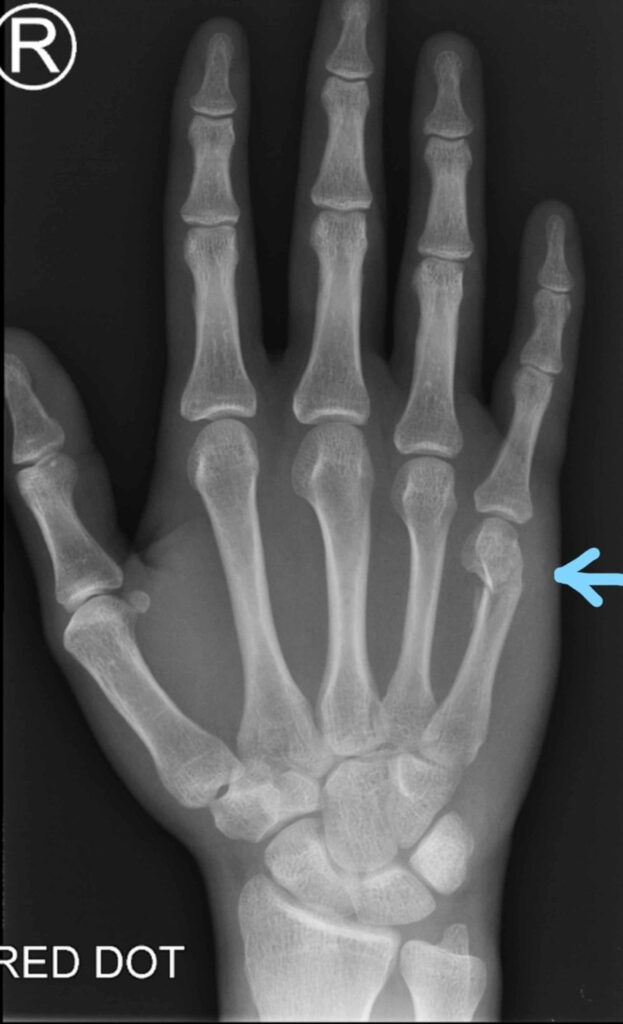
What is a boxer fracture?
A boxer fracture is a break in one or more of the bones in the hand. It’s a common injury among people who participate in contact sports, such as boxing and mixed martial arts.
The fracture usually occurs in the metacarpal bone, which is the long bone in the palm of your hand. A boxer fracture can cause pain, swelling, and bruising. It can also make it difficult to move your hand and fingers.
If you have a boxer fracture, it's important to see a doctor so that the bone can be properly aligned and immobilized. In some cases, surgery may be necessary to repair the fracture. With proper treatment, most people recover from a boxer fracture without any long-term problems.
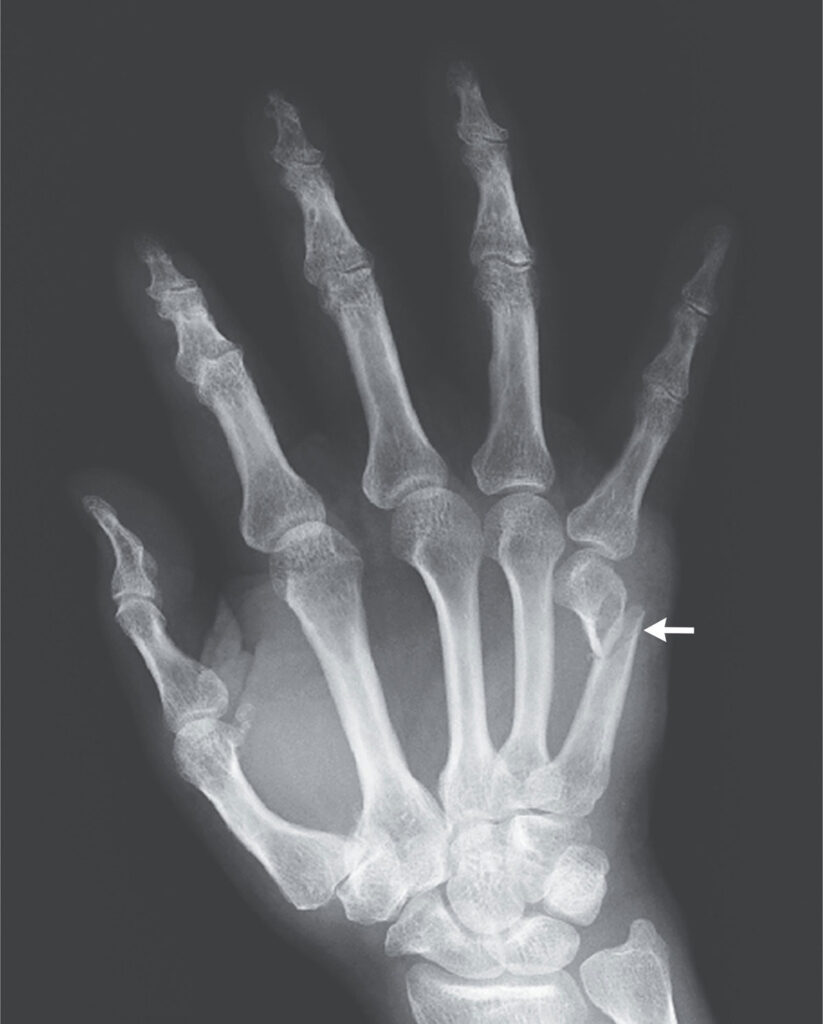
What causes a boxer fracture?
A boxer fracture usually occurs when you make a fist and punch something hard, such as a wall or another person. The force of the punch can cause the bones in your clenched fist to break. A boxer fracture can also occur if you fall on your closed fist or if you’re hit in the hand with a hard object.
Who's at risk for a boxer fracture?
Anyone who punches something can get a boxer fracture. But you’re more likely to get one if you participate in a contact sport, such as boxing or mixed martial arts. You’re also more likely to get a boxer fracture if you have osteoporosis, which is a condition that weakens the bones.
What are the symptoms of a boxer fracture?
The most common symptom of a boxer fracture is pain in the hand. The pain may be severe and make it difficult to move your hand or fingers. You may also have swelling and bruising in the affected area. In some cases, you may be able to see the break in the bone.
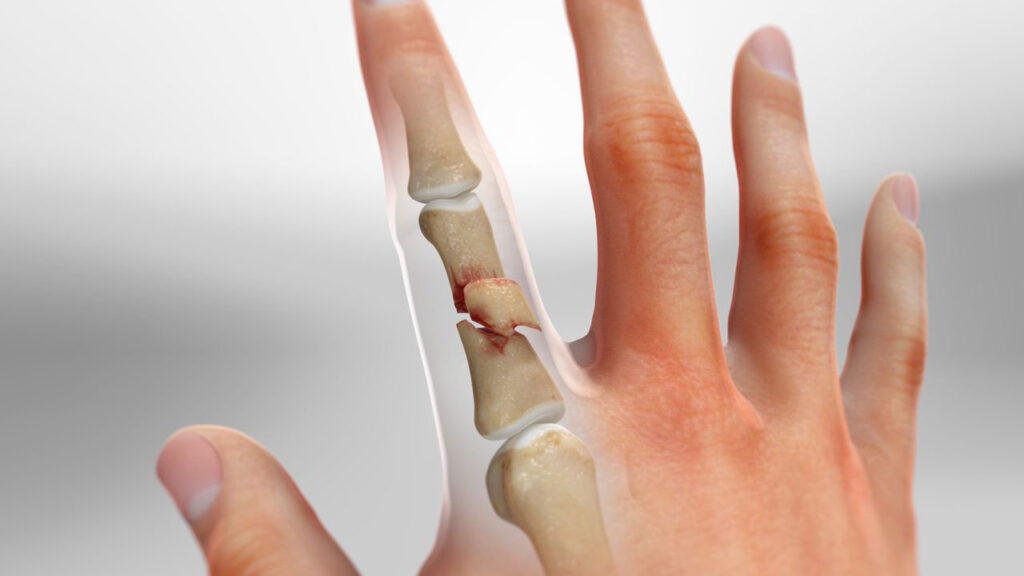
How is a boxer's fracture diagnosed?
The treatment for a boxer fracture depends on the severity of the injury. For a mild fracture, your doctor may just tell you to rest and ice the area. You may also need to wear a splint or cast for several weeks.
For an unusually severe boxer’s fracture, you may need surgery to realign the bones and stabilize them with metal pins, plates, or screws.
After surgery, you’ll likely need to wear a splint or cast for four to six weeks. Physical therapy may also be recommended to help restore the range of motion in your hand.
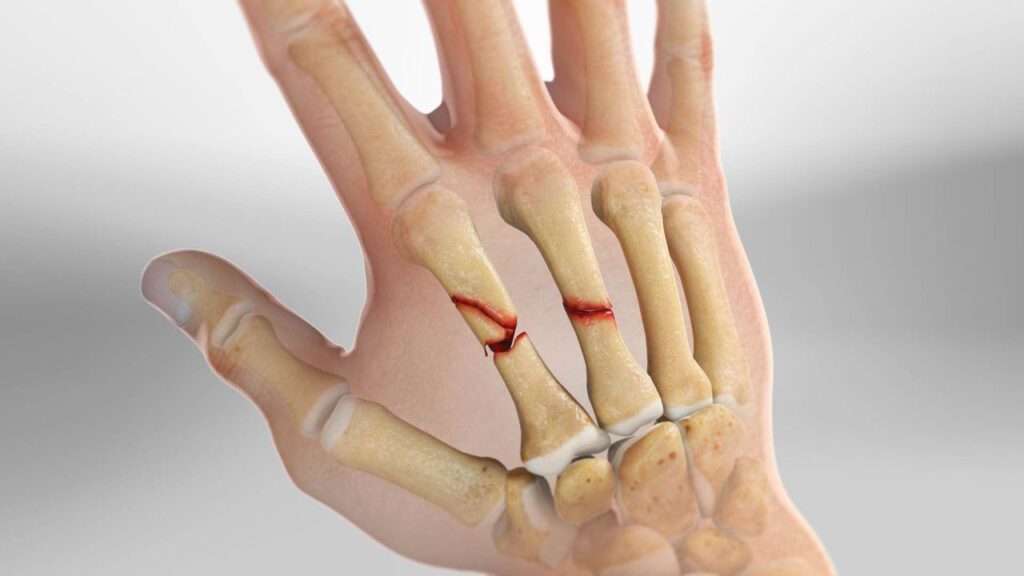
How is a boxer's fracture treated?
There are several factors that may increase your risk of developing a sports hernia. These include:
» Participation in high-impact sports, such as football or hockey
» Poor conditioning
» Muscle imbalance in the groin area
» Weakness in the abdominal muscles
» Previous injury to the groin area
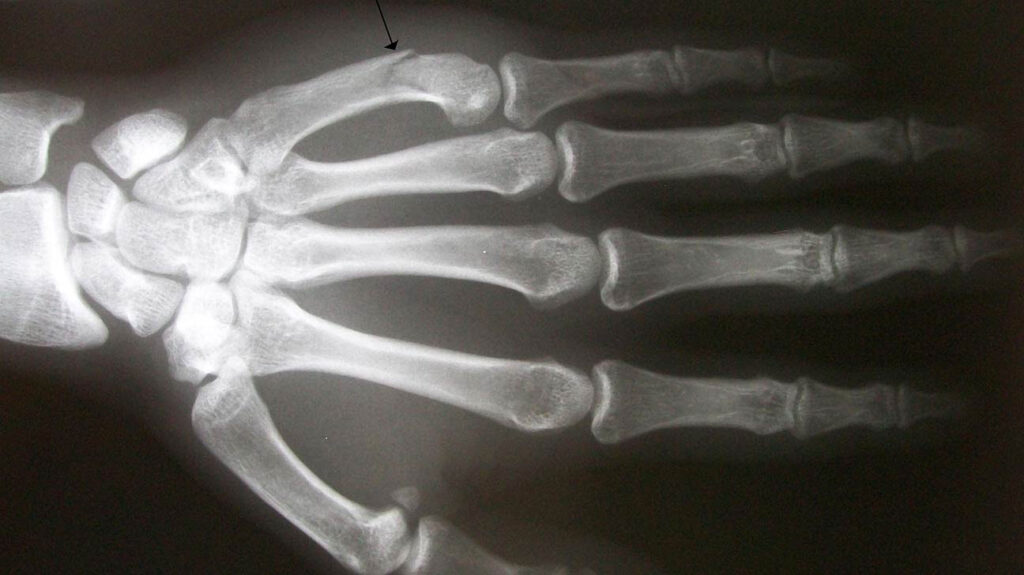
What are the complications of a boxer fracture?
If a boxer fracture or metacarpal neck fracture isn’t treated properly, it can lead to complications, such as:
* arthritis
* numbness or tingling in the affected area
* loss of strength in the hand
* deformity of the hand or difficulty to move pinky finger
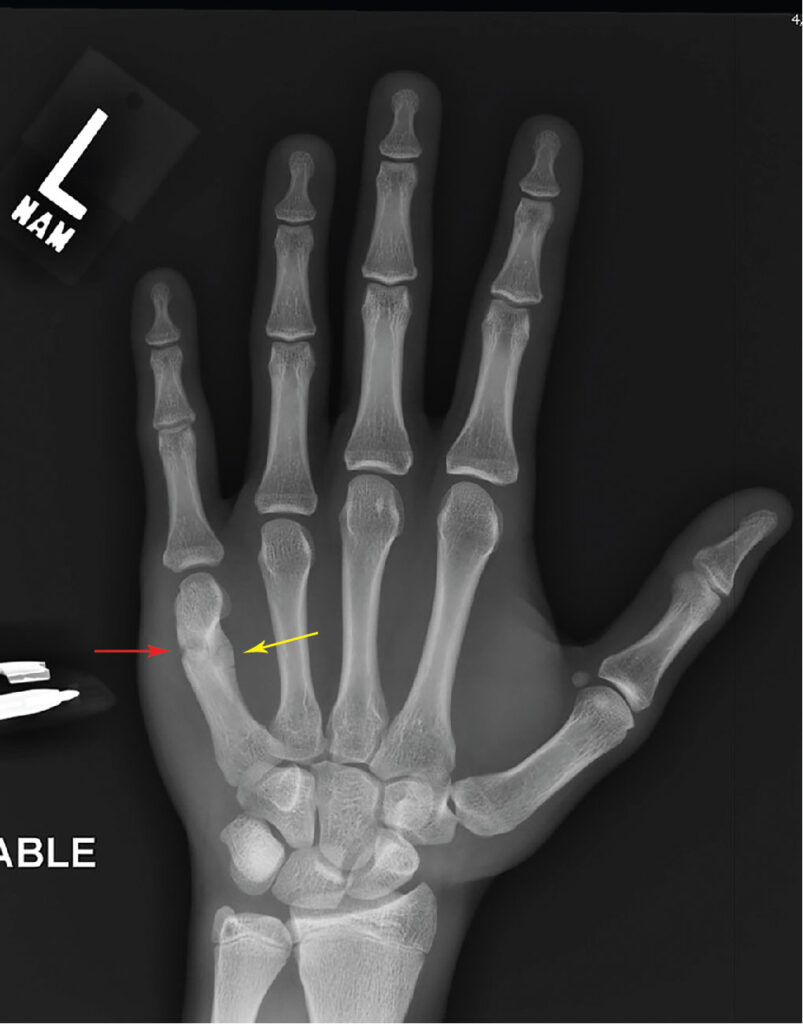
When should I see a doctor?
If you have pain, swelling, or bruising in your hand, you should see a doctor. You should also see a doctor if you can’t move your hand or fingers. These may be signs of a metacarpal fracture. You should visit a doctor to see if your metacarpal bones are okay. Doctors can spot metacarpal fractures using X-rays.
Can a boxer fracture be prevented?
Like most commonly broken bones, there’s no sure way to prevent a boxer’s fractures. But you can lower your risk by using proper safety gear when participating in contact sports.
Wearing gloves can help protect your hands from injuries. And, if you have osteoporosis, it’s important to get treatment to strengthen your fifth metacarpal bone and lower your risk of fractures.
A boxer fracture is a break in one of the bones in your hand. It's usually caused by punching something hard, such as a wall or another person. A boxer fracture can cause mild pain, swelling, and bruising. It can also make it difficult to move your ring finger or hand. With proper treatment, most people recover from a boxer fracture.
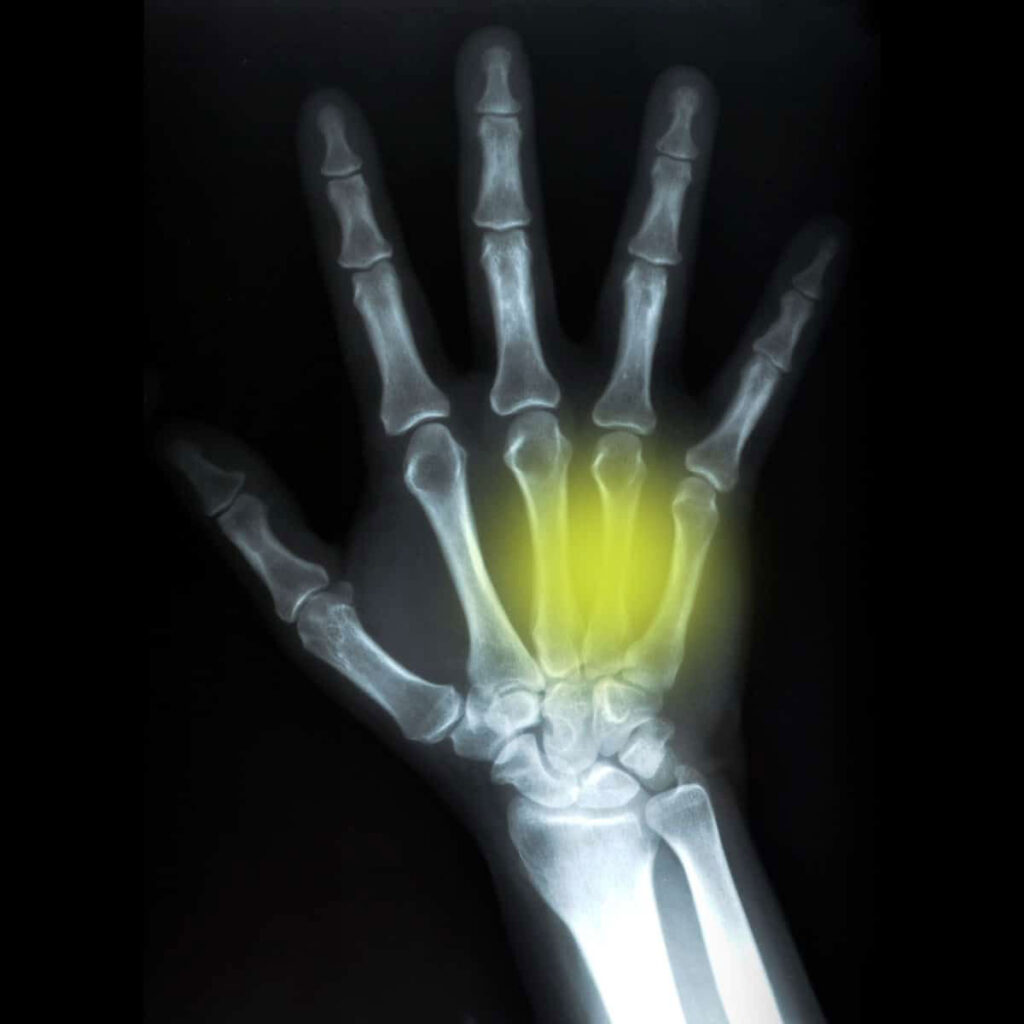
Are there any home remedies for a boxer's fracture?
There are a few things you can do at home to help treat your boxer’s fracture. Rest is important, so make sure to take it easy and let your body heal. You can also ice your injury to reduce swelling and only mild pain. Over-the-counter pain medication can also help.
If you have a more serious fracture, you may need to see a doctor or orthopedic specialist. Surgery is sometimes necessary to fix a boxer’s fracture. Recovery times vary, but typically it takes 4-6 weeks for the bone to heal properly.
If you have a boxer's fracture, it's important to follow your doctor's instructions and take care of yourself at home. With proper treatment, you'll be on your way to recovery in no time.
In which cases surgery is required?
If you have a more severe boxer’s fracture, surgery may be necessary. This is typically only the case if the bone has shifted out of place or if there is a significant amount of displacement.
Surgery usually involves setting the bone back into place and then stabilizing it with metal plates and screws. The recovery time for surgery is usually longer, but it can help to ensure that the bone heals properly.
What are the surgery costs?
The cost of surgery can vary depending on the severity of the fracture and the individual case. Typically, surgery for a boxer’s fracture can range from $5,000 to $10,000. However, some insurance plans may cover some or all of the costs. It’s important to check with your insurance provider to see what is covered.
How can you finance your surgery?
There are a few options available for financing your surgery. You can check with your insurance provider to see if they cover any of the costs. You can also look into government assistance programs or private loans.
There are a number of organizations that offer financial assistance for medical procedures, so you may be able to find one that can help you with the costs of your surgery.
What is the recovery time for surgery?
The typical recovery time for surgery is 4-6 weeks. However, this can vary depending on the severity of the injury and the individual case. After surgery, you will likely need to take it easy and avoid strenuous activity.
You may also need to wear a splint or cast to protect the bone as it heals. Physical therapy may also be recommended to help you regain strength and mobility.
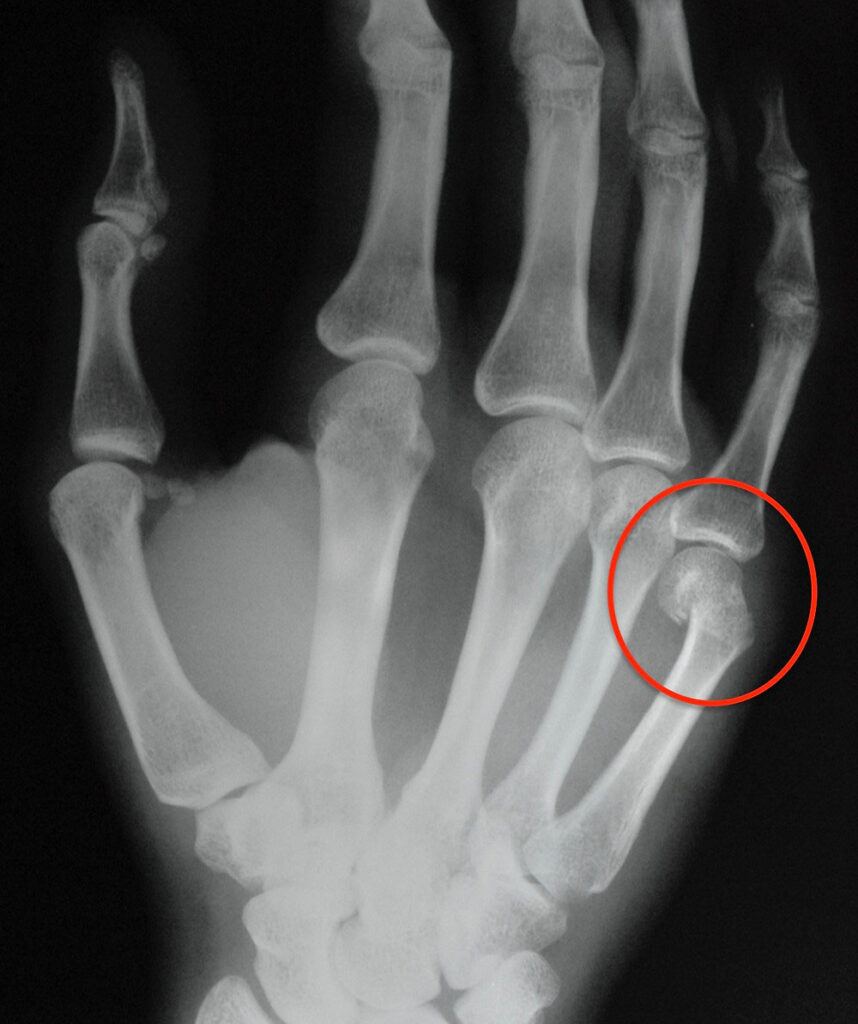
How is a boxer's fracture treated?
The treatment for a boxer fracture depends on the severity of the injury. For a mild fracture, your doctor may just tell you to rest and ice the area. You may also need to wear a splint or cast for several weeks.
For an unusually severe boxer’s fracture, you may need surgery to realign the bones and stabilize them with metal pins, plates, or screws.
After surgery, you’ll likely need to wear a splint or cast for four to six weeks. Physical therapy may also be recommended to help restore the range of motion in your hand.
Have you been injured at some point in your journey?
Are you not achieving your highest level of function?
We’ve helped hundreds of people at all walks in life
get back to performing their best painfree!
3 Ways to Level Up Your Rehab and Injury Prevention With Us





